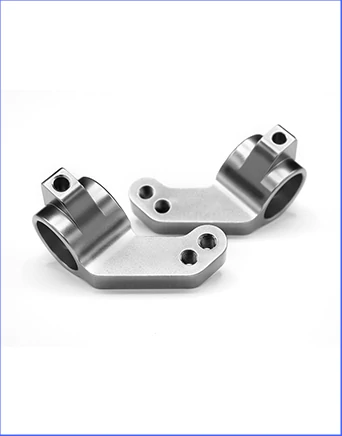Time to read: 6 min

Stainless steel, prized for its durability and anti-corrosive properties, is a go-to material for various applications, including rapid prototyping. This article sheds light on the differences between 316 and 316L stainless steel, guiding you through their properties, applications, and the factors to consider when selecting the right grade for your project.
Stainless steel's popularity in rapid prototyping is attributed to its strength, corrosion resistance, and versatility in manufacturing processes like sheet metal fabrication and CNC machining. The comparison between 316 and 316L stainless steel is a common topic of interest.
What is 316 Stainless Steel?
316 stainless steel, an austenitic alloy, is known for its exceptional corrosion resistance due to a maximum carbon content of 0.08% and the addition of 2-3% molybdenum. This alloy is suitable for environments with acidic conditions and elevated temperatures.
Properties of 316 Steel
- High strength for moldability without cracking
- Superior corrosion and pitting resistance for chemical and acidic exposure
- Good formability and weldability
- Elastic modulus of approximately 193GPa
- Melting point between 1371°C – 1399°C
- Minimum tensile strength of 515MPa
- Density of 7.98g/cm3
Applications of 316 Steel
This steel is ideal for applications requiring corrosion resistance, such as heat exchangers, pharmaceutical and photographic equipment, marine environment-exposed parts, and chemical process apparatus.
What is 316L Stainless Steel?
316L stainless steel, with its officially recognized Grade 316L, is distinguished by a lower carbon content of up to 0.03%. The reduced carbon content minimizes the risk of carbide precipitation during welding and other sheet metal fabrication processes.
Properties of 316L Stainless Steel
- High resistance to creep
- Excellent formability
- Rupture resistance and good tensile strength at elevated temperatures
- Lower carbon content than 316 steel, enhancing its corrosion resistance
Applications of 316L Stainless Steel
316L stainless steel is widely used across industries such as food processing, marine, jewelry, water treatment, and power generation. It is also favored in medical applications for its mechanical properties and aesthetic finish.
316 vs 316L Stainless Steel: Similarities
Both 316 and 316L stainless steel share high resistance to corrosion, similar chemical compositions, excellent flexibility, and good weldability. Despite slight variations in carbon content, their pricing remains comparable.
316 vs 316L Stainless Steel: Differences
The key differences lie in corrosion resistance, carbon content, and mechanical properties. 316L offers higher corrosion resistance and is preferred for welding-intensive applications due to its low carbon content. In contrast, 316 steel presents better overall mechanical properties.
Selecting the Right Stainless Steel
When choosing between 316 and 316L stainless steel, consider factors such as corrosion resistance, cost, magnetic properties, manufacturing process, and mechanical properties.
UnoFactory's Expertise in Fabrication
At UnoFactory, we specialize in providing top-tier fabrication services, ensuring that our clients receive the best quality materials and processes for their projects. Our extensive experience and commitment to customer satisfaction make us a leading provider of rapid prototyping services.
FAQ
- What does the 'L' in 316L signify? It stands for 'low,' referring to the low carbon content, which is crucial for applications requiring crack resistance.
- Is 316L stainless steel prone to rust? The presence of molybdenum enhances its anti-corrosive nature, protecting it against rust in various environmental conditions.
- Does 316L stainless steel tarnish? With minimal nickel content, 316L is hypoallergenic and suitable for applications like medical equipment and jewelry.
Conclusion
The choice between 316 and 316L stainless steel depends on your project's specific requirements. This article has outlined the differences and similarities between these two grades, guiding you in selecting the appropriate material for your rapid prototyping needs. For superior stainless steel products and services, trust UnoFactory for quality and expertise.




